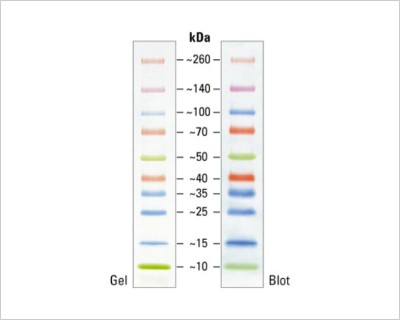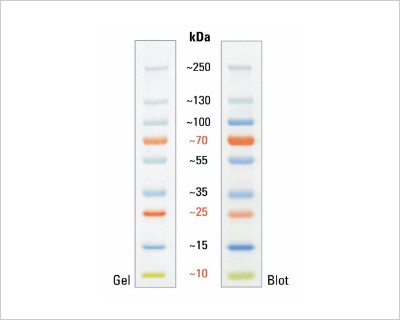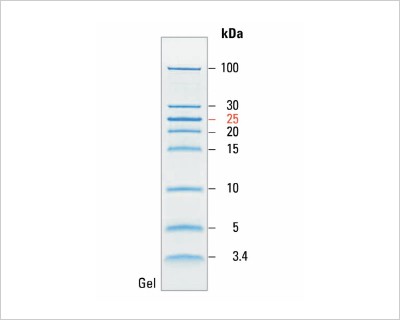How to Choose the Right Protein Ladders
Protein ladders, also known as protein markers or protein standards, are used to help estimate the size of proteins separated during electrophoresis. They serve as points of reference because they contain mixtures of highly purified proteins with known molecular weights and characteristics.
Protein ladders are loaded onto gels alongside samples and migrate during electrophoresis at a rate that is inversely proportional to their molecular sizes. When the run is complete, the proteins will appear as separate bands in the gel.
Protein ladders are available with various protein sizes and can be prestained or unstained. Read on to learn which is best for your applications.
What Are Prestained Protein Ladders?

Prestained naturally occurring proteins will vary due to the amount and location of dye binding sites. Prestained natural proteins may produce broader bands than recombinant proteins, especially when they are stained with more than one color. These broad bands are less distinct, which makes them less useful for molecular weight estimation. Although some laboratories continue to use natural protein ladders, recombinant standards are more commonly used.
Recombinant protein ladders are engineered to produce tight bands, evenly spaced molecular weights, and other specific traits. Each protein can be stained with a different color for easy identification or labeled with affinity tags for western blot detection.
In western blotting, prestained protein ladders can be used to:
- Monitor protein separation during SDS-polyacrylamide gel electrophoresis
- Verify transfer efficiency between the gel and PVDF, nylon, or nitrocellulose membranes
- Calculate the approximate size of your protein by comparing the image of the membrane with the ladder to the image produced by antibody staining
These prestained recombinant protein ladders include three high-intensity reference bands: 25, 50, and 75 kD. They offer easier identification of protein molecular weights and the ability to monitor migration during electrophoresis. (Unstained protein ladders have only the bromophenol blue at the dye front to help monitor progress; it does not help to assess blotting efficiency.)

What Are Fluorescent Protein Ladders?
Fluorescent protein ladders are used in polyacrylamide gel electrophoresis to help identify and quantify separated proteins. Unlike stains that absorb light, fluorescent stains emit light when the fluorophore in the stain is excited. The light intensity is proportional to the protein concentration.
Ladders pre-stained with dyes that fluoresce when viewed with light of specific wavelengths are popular because they are sensitive, demonstrate little background interference, have a good linear dynamic range, and are suitable for mass spectrometry analysis.
| Catalog Number | Description | Size Range |
|---|---|---|
Invitrogen™ iBright™ Prestained Protein Ladder | 11 to 250 kDa | |
Invitrogen™ MagicMark™ XP Western Protein Standard | 20 to 220 kDa | |
Thermo Scientific™ SuperSignal™ Molecular Weight Protein Ladder | 20 to 150 kDa |
What Are Unstained Protein Ladders?

Unstained protein ladders are useful when you need to accurately determine the size of your protein. However, the proteins can only be visualized after staining with a Coomassie™ stain or other non-specific protein stain. Unstained protein ladders offer more accurate protein sizing because the dyes in prestained ladders can slightly distort the proteins on the gel.
These ladders include easy-to-purify proteins of known molecular weight. Visualize them on SDS-PAGE gels by staining with Coomassie Brilliant Blue R250 or after western transfer using Ponceau S or a similar stain.
